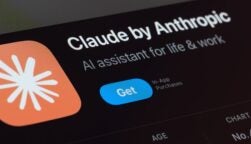Key Takeaways
- Databricks will include multiple OpenAI models, including GPT-5, into both its data platform and its AI product Agent Bricks.
- The goal: Simplify enterprise AI deployment by helping companies built their own custom bots.
- With GPT-5, users can create reasoning agents, productivity agents, coding agents or more.
Analytics and AI software platform Databricks just made a $100 million bet on OpenAI. That’s how much it’ll be paying for a multi-year deal that will see OpenAI’s models incorporated into Databrick products.
The goal is to better simplify enterprise AI deployment, by helping companies build their own AI bots and agents.
AI tools are increasingly closely integrated into common software and daily tasks in 2025. This deal is just the latest example of the large-scale wheeling and dealing that AI companies everywhere are rolling out as they further embed themselves across industries.
The Agent Bricks Tool Now Has the GPT-5 Model
The just-announced team-up will see Databricks build multiple models, including OpenAI’s most recent GPT-5 model, into both its data platform and its AI product Agent Bricks.
Enterprise organizations can use Agent Bricks to build custom AI apps and agents with access to their own propretary data. Now, OpenAI’s models can be part of those tools, as well as both in SQL or via API, the company has announced.
 This just in! View
This just in! View
the top business tech deals for 2025 👨💻
In other words, this new deal integrated AI into existing tools with the end goal of making… even more AI tools. It’s AI tools all the way down.
How to Use Databricks Apps? Reasoning, Coding, and More.
How can companies use the technology? Databricks has a few examples:
- Reasoning agents, using “GPT-5’s extended reasoning mode” to scan through long documents or conduct multi-step calculations.
- Productivity agents for “summarization, business writing, knowledge management, and customer support.”
- Coding agents for “debugging large systems, modernizing legacy applications, and generating production-ready code.”
The new GPT-5 model is better than ever at managing new contexts, working across multiple tools, and figuring out requests with more than one step.
One thing it still can’t complete stop, however, is AI hallucinations, with a landmark study from OpenAI just last week confirming that ending AI fabrications are “inevitable” for any base models.
Will AI Hype Continue?
In 2025, AI hype may have slightly deflated.
One study found that AI tools limited users’ neural, linguistic, and behavioral levels (much like lifting weights at the gym with a crane might limit your muscle growth). Another study found most AI pilots didn’t pan out at the companies trying them out.
However, there are still billons of dollars of AI investments sloshing around in the tech world, and money talks. Enterprises will likely be trying to integrate AI agents into workflows for years to come.
With this new deal, they’re now a little more likely to reach for Databricks when they do so.




